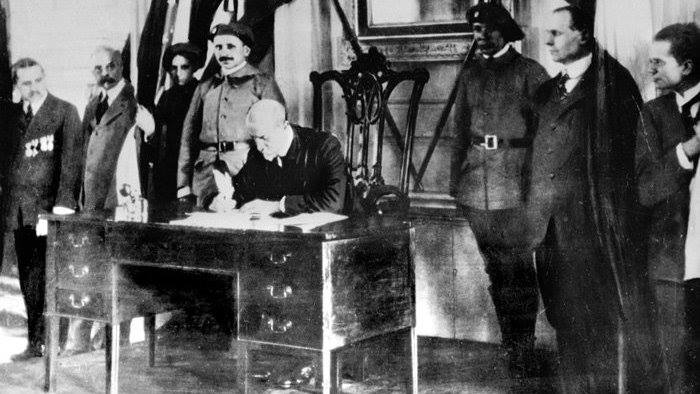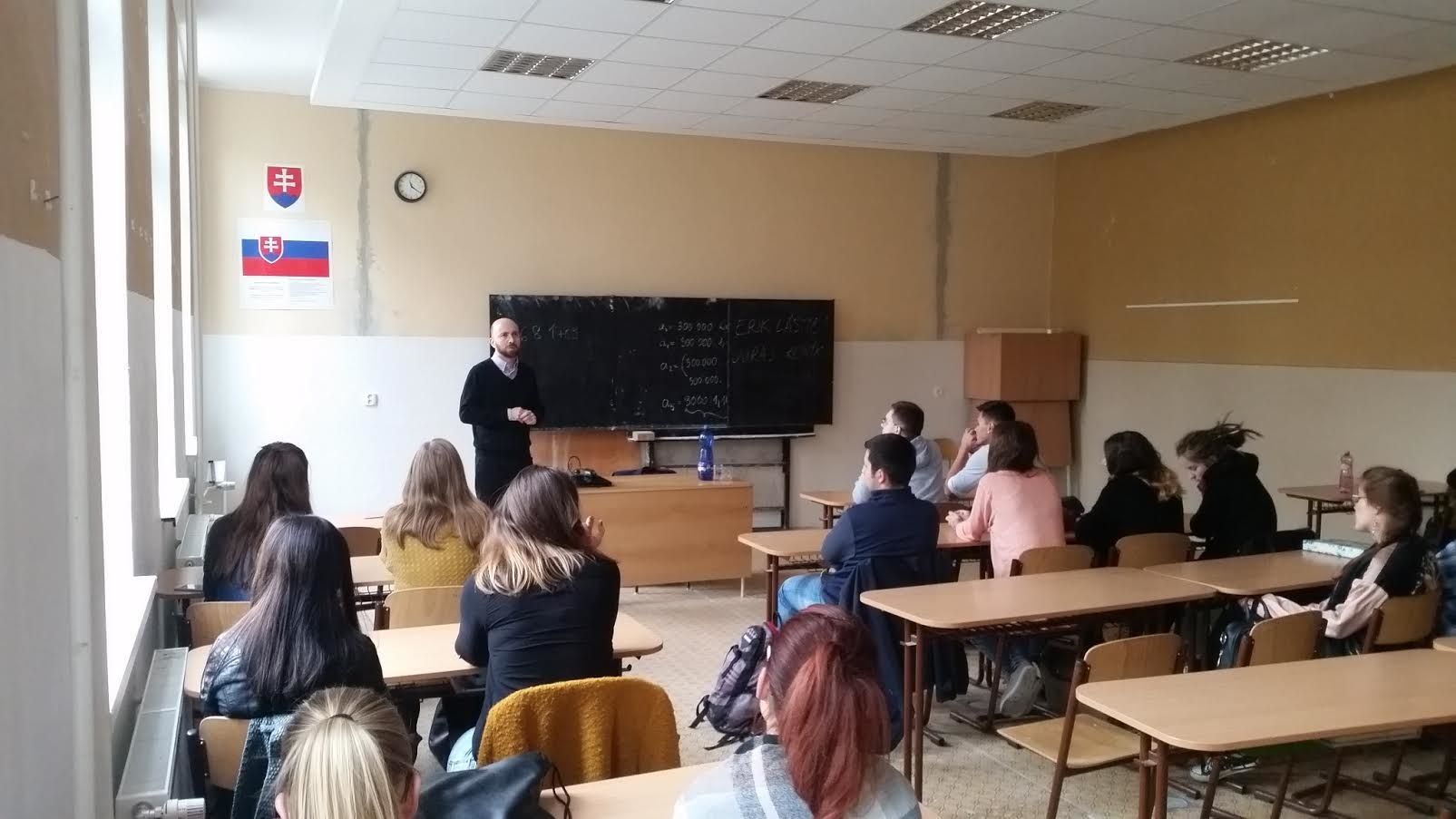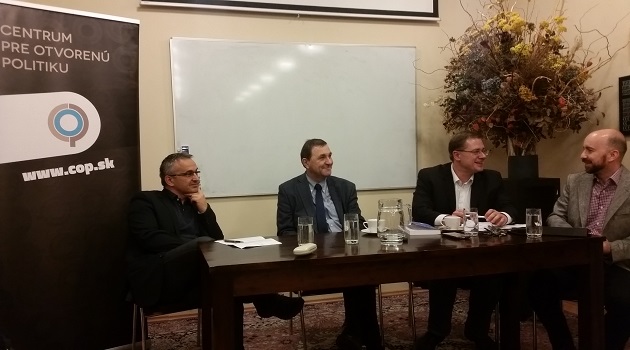Andrew A. Michta: Central Europe: A Vanishing Idea
The year 2014 will be remembered in Europe for the West’s rickety consensus on how best to minimize the damage caused by Russia’s resurgence as a revisionist power. Developments along Europe’s periphery marked the unequivocal end of aspirational “positive geopolitics,” built around the belief that the fall of the Berlin Wall in 1990 began a permanent reordering of Europe. The annexation of Crimea in 2014 as the prerequisite of Russia’s sui generis “return to Europe” should disabuse even the most ardent optimists of the notion that we are still in such an era. The full impact of war’s return to Europe is yet to be felt, but the coming year will begin to change that. While Ukraine’s fate hangs in the balance, the first victim of Europe’s deteriorating security is not a state but an idea: Central Europe, a concept whose emergence once held out a promise that the “end of history” would yield lasting change for millions more across the world.
In the decade immediately following the collapse of communism, the outer empire of the now defunct Soviet Union successfully shed the moniker of “Eastern Europe.” Its subsequent designation as “East-Central Europe” (though I wondered at times where “West-Central Europe” might be) signified an affirmation of the region’s restored independence. In this narrative, the idea of “Central Europe” embodied a region that had returned to the West and restored Europe to its organic whole. From the start, the idea of Central Europe transcended the so-called “Visegrad Group” or V-4, consisting of Poland, Hungary, Czech Republic, and Slovakia. It implied more than the traditional concept coined by Milan Kundera of a region culturally linked to the West but geographically (and through an accident of history) pushed to the East. It encapsulated the region’s linkage to a larger vision of Europe, and its shared destiny with Western Europe, which over time would ennoble the former Soviet colonies and overcome the West-East dichotomy.
In this new vision, Warsaw was no longer the Paris of the North, nor Prague Vienna’s Eastern cousin, nor Bratislava the erstwhile imperial Pressburg, but simply Warsaw and Prague and Bratislava. Gone at last were the quotation marks around the notion of a common European identity, with Western and Eastern Europe meeting at the “Center.” The concept implied connectivity with the Mitteleuropa of yore, relinked with Germany as a now benign leader of and partner in the European project. From there, the idea of Central Europe looked poised to reshape other regions, reaching further East and North—and for a brief moment it almost seemed possible, as the EU Eastern Partnership linked Sweden and Poland in a common effort, breaking through Cold War era divides and appearing to touch what was once the borderlands of the Russian inner empire: Ukrayina in its most rudimentary sense.
For the United States, Central Europe offered a sense of possibility, marked by the decision in the second round of post-Cold War NATO enlargement to bring the Baltic States into the fold, seemingly putting paid to the notion that Russia could still redline its preferred sphere of interest. Although with misgivings, Germany, France, Britain and other NATO allies went along, for at the time of America’s celebrated hyperpuissance there was also a sense that enlargement was little more than a political exercise, with hard power increasingly absent from Europe’s agenda.
The idea of Central Europe was a potent tool of political transformation, for it carried with it the promise that the “lands in-between” could finally escape the dilemma of being the periphery of either the East or the West, depending on how great power competition unfolded. The post-communist democracies of Central Europe, if linked to the United States, Germany, and Western Europe more broadly, could reasonably hope that joining NATO and the European Union would allow them to shed once and for all their peripheral status.
The slow demise of Central Europe as a land of possibility from which the liberal ideal could emanate further East began with the 2008 NATO Bucharest summit decision not to offer the Membership Action Plan to Georgia and Ukraine, followed by the Russian-Georgian war and the severing by Russia of two Georgian provinces. That conflict along Europe’s periphery also began the process of the closing of Europe. Though Paris and Berlin more or less chalked it up to Mikheil Saakashvili’s unyielding stance with respect to Russia, it showed without a doubt that a postmodern Europe framed by a normative regime was a self-reflexive narrative bearing little resemblance to the outside world and offering even less in concrete security terms to those outside it.
The continuing disarmament of Europe affirmed Vladimir Putin’s calculus about the extent to which Europe’s resolve had softened. In hindsight, we can see that the immediate factor was the Obama administration’s pivot to Asia, the attendant “reset” with Russia, and then the Defense Strategic Guidance in 2012. In their wake, the years between the war in Georgia and the 2014 Russian annexation of Crimea saw: the rapid fragmentation of the once-touted V-4; smaller states seeking their own paths to best to accommodate the changing reality and waiting for German policy to determine its choices; and Poland looking to frame what was sometimes aspirationally called in the early 1990s the “second grand European reconciliation.” Polish Foreign Minister Radoslaw Sikorski’s Berlin speech in November 2011, in which he said German inaction was scarier than Germans in action, was the high point of the hope that Germany could be a partner, in both word and deed, to making the idea of Central Europe more than an aspiration of post-communist states. The dream was that with Germany’s full backing Central Europe would finally escape its middle-periphery dilemma, with the simple answer that it would be no one’s periphery. The Central European hedge rested on the assumption that Germany’s intra-regional relationships, especially its relationship with Poland, would offset its Russian Ostpolitik as a historically dominant policy vector. Polish and ultimately all of the V-4’s assumptions rested on the premise that Germany’s commitment to the region trumped its historical sensitivity toward Russia, and that economic integration within the EU would ultimately displace those trends. How Germany ultimately responds to the Russian invasion of Ukraine will determine whether these hopes are spurious or not.
Regardless, Russia’s invasion of Ukraine put paid to the dream of a Central Europe built around a German-Polish alliance, bolstered by the smaller post-communist states around it. With German Foreign Minister Frank-Walter Steinmeier publicly rejecting any notion of permanent NATO bases in Poland and the Baltics, there could be no more illusion that the region had congealed into a qualitatively new entity. With hard security questions now paramount for the frontier states in north-central Europe (including the Scandinavians), their old peripheral status has resurfaced. The NATO summit in Wales, during which Germany debated the extent to which the 1997 NATO-Russia Founding Act remained in force, sent a message that history had come full circle—or rather that it had not actually gone anywhere, despite much of the post-Cold War rhetoric. The Balts, Poles, and, as the Ukrainian conflict deepened, even the Romanians in the southeast were asking for reinforcement, but they were receiving only offers of further reassurances. The painful truth that being geographically in the middle doesn’t necessarily mean being “central” has re-asserted itself.
There are some who have not been completely disabused of the Central European dream, especially the post-communist democracies forced again by Russia to face up to their own relative weakness and their inability to self-insure when it comes to their national security. NATO, which has become to many in Western Europe a hollowed out relic, remains the center of conversation among the frontier states now shaken to the core by Putin’s aggression. Otherwise, as we enter 2015, the clouds gathering along Europe’s east continue to elicit in many western corners of Europe only the spurious belief that the status quo ante can somehow be restored.
It’s clear that the belief that geographic determinants along Europe’s eastern periphery could somehow be erased was excessive from the start (though that belief was certainly an understandable one in the heady days after the fall of the Berlin Wall). Putin’s aggression has forced recognition of the fact that the idea of Central Europe—a freshly minted geostrategic entity, owing more to the Western belief in a new dawn of “Europe whole and free and at peace” than to the hard power realities on the ground—was a mirage. Europe’s center-periphery dilemmas are again in full view, and the divisions will only get deeper in 2015. The question now is whether the NATO alliance will be able to generate enough of a consensus to move from reassurance to reinforcement to deterrence along its exposed northeastern flank.
Andrew A. Michta is the M. W. Buckman Professor of International Studies at Rhodes College and an adjunct fellow at the Center for Strategic and International Studies (CSIS).
(The American Interest 31. 12. 2014)
http://www.the-american-interest.com/2014/12/31/central-europe-a-vanishing-idea/







